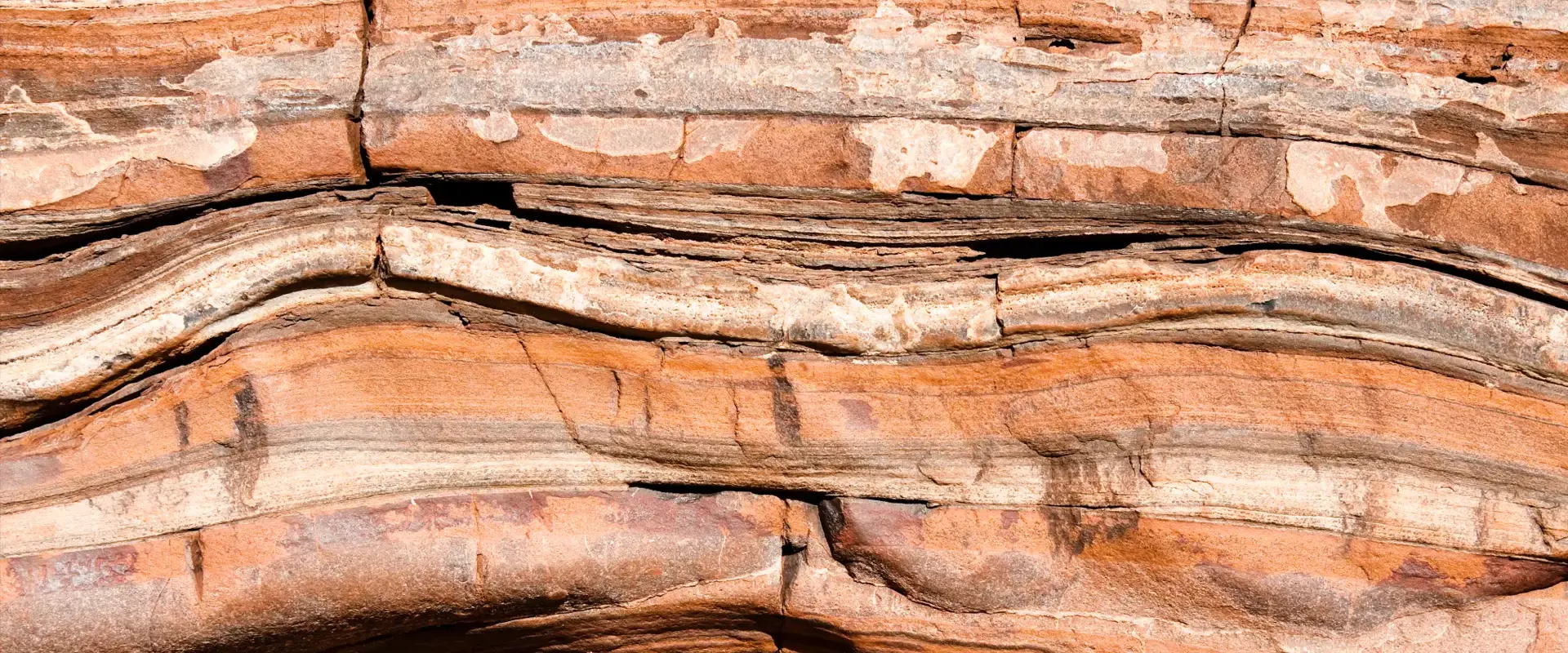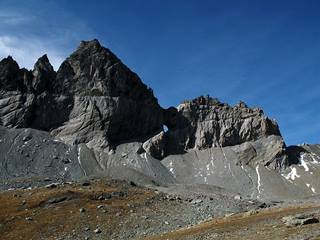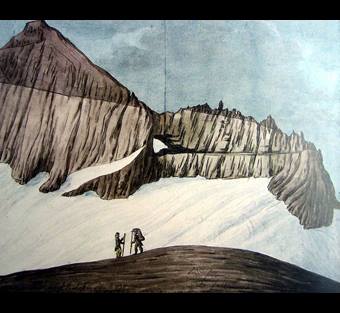
Glarus, Alpine Nappes

The Glarus Thrust, in the Alps of eastern Switzerland, like the thrust seen at Ben Arnaboll in Scotland, is among the world’s most famous thrust faults – low angle reverse faults in which older rocks can be pushed up and over higher strata. It formed during the Alpine Orogeny throughout the Miocene and Oligocene, as a result of continental collision between the Eurasian and African plates.
 |
|
| Credit: © Martinsloch, Glarus by Swiss Scientist Hans C. Escher |
The Glarus Thrust forms the base of a great nappe in which the Permian aged reddish-green Verrucano formation, consisting of layered volcanic rocks, sandstones and conglomerates, has been pushed northwards at least 40km above the younger, Cretaceous carbonates and the Tertiary grey-brown Sardona Flysch, a sequence of shallowing-upward deep marine shales and sandstones. The thrust plane itself is marked by a conspicuous, almost continuous, 20cm-5m thick zone of intensely deformed calc-mylonites, which have been dragged and sheared along the base of the Helvetic nappes during thrusting.
The majority of gold mineralisation in the region took place during the Ordovician time period, around 465 million years ago, as an ancient ocean called Iapetus began to close. This initial closure brought lines (or arcs) of volcanoes and slabs of ocean crust into collision with the continental margin where the host rocks where sitting. This orogenic collision, known as the Grampian Orogeny (an early phase of the Caledonian orogeny), resulted in rapid thickening of the crust and saw huge increases in temperature and pressure which cause regional metamorphism, and ultimately the gold mineralisation. There is continued debate and research aimed towards unveiling the role of later tectonic events in gold mineralisation across the region, and there is no doubt that earth movements during the Devonian and Carboniferous time periods, between 400 and 300 million years ago, known as the Variscan Orogeny, have modified and complicated the rocks and gold deposits.
Further Reading:
Herwegh et al. (2008) The Glarus thrust: excursion guide and report of a field trip of the Swiss Tectonic Studies Group, Swiss Geological Society, 14.–16. 09. 2006
Badertscher et al. (2002) Glarus overthrust: A major pathway for the escape of fluids out of the Alpine orogen Geology 30 (10): 875-878.
Related Links
Other sites
- Twin: Windward Isles
Cwm Idwal
- Twin: Mount Pinatubo
Sperrin Mountains
- Twin: Sierra Nevada
Southern Uplands
- Twin: Nankai
Ben Arnaboll
- Twin: Glarus Thrust
Outer Isles
- Twin: Tohoku Earthquake
Clogherhead and Shannon
- Twin: Papua New Guinea
Cairngorms
- Twin: New Hampshire Granites
Great Glen Fault
- Twin: North Anatolian Fault
The Lizard
- Twin: Troodos Ophiolite
Yoredales
- Twin: Antarctica
Stanage Edge
- Twin: Ganges Delta
Hartland Quay
- Twin: Zagros Range
Amroth-Saundersfoot-Tenby
- Twin: Salt Range, Pakistan
Vale of Eden
- Twin: East African Rift Valley
Zechstein
- Twin: Sicily
Alderley Edge
- Twin: Navajo Sandstone
Isle of Skye
- Twin: Mount Kilimanjaro
Lulworth Cove
- Twin: Albania
Giant's Causeway
- Twin: Cascade du Ray Pic
